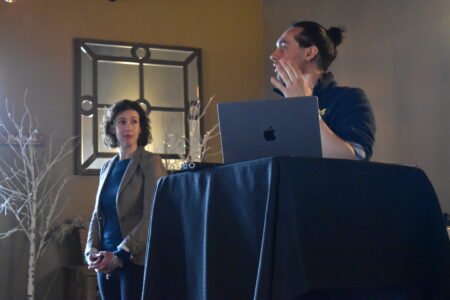Paperboy memoirs: The Green Sheet
Some childhood memories are strong – almost indelibly etched into an absorbent young brain needing to be filled, and retained forever.
For me, one of those permanent memories is the experience of being a paperboy in the 1950’s for Houghton’s Daily Mining Gazette. For an 11-year old in 1957, the distraction of TV didn’t yet exist in my household, and computers, video games and cellphones were far off in science fiction future, so having my first real job was the huge focus of my life. I worked as a carrier through 1960 – about 4 years total.
I’m writing this from sheer recall, which attests to the strength and vividness of these memories, which survive after more than 60 years of other life experiences. But please forgive any minor inaccuracies or misspellings of names, which likely will occur. I’m thankful to Mike Laurin and Steve Wyble – two other childhood friends who also worked at the Gazette and helped fill in my voids of memory, and to my brother, Bob, who had earlier worked the big Gazette route covering East Houghton.
My writings are in installments covering: 1. The Gazette Operation and Production, 2. My Gazette Route – Downtown Houghton, 3. The Paperboy Business Model and 4. Houghton Life In the 50’s (a more general look at those wonderful times).
I hope you’ll enjoy this glimpse of the Gazette in much simpler times:
The waiting paper boys, anxious to get going their routes, were always last to get their papers. The bundlers and rollers always got them first so the drivers could hit the road on their rural routes. As an eager, impatient paperboy, I never understood why we were made to wait. Maybe it was simply to maintain a well-defined “pecking order” in the hectic pressroom. Of course we paperboys were clearly at the bottom of that order – and we knew it.
So during the wait, the pressroom became a regular hangout for all the paper boys. It was always fun to get there early for social time with the “guys”…. hearing the latest jokes and maybe even sneaking out back to share a cigarette stolen from some parent’s pack – or flipping dimes for a Coke from the old upright machine. Kids like Mike Laurin, Bernie Lorasch, Dean Dowd, Ben Smith and Fred Chamberlain are some that I remember. (Wish I could recall more names!) We’d especially liked Saturdays, when we could get to the pressroom earlier than usual – not on a rushed after-school schedule. That allowed us to hang out and see the press being set up and eventually coming to life to crank out the special Saturday Green Sheet.
In the Saturday Green Sheet edition, the outer fold was always printed on green paper and featured historic stories usually penned by reporter Earl Gagnon, a local history buff with a special interest in Great Lakes ships and their passage through the Portage Canal. Earl was a colorful reporter known for his academic use (and over use) of flowery, dated verbiage, which earned him the nickname, “The Professor” by the pressroom gang. When covering “live” stories, he always used his very large “press” camera. The contraption involved removable film plates and large flash bulbs that Earl, in a move of pure swagger, would lick the base of before screwing them into his camera. No “point-and-shoot” simplicity here – making a photo took real technical know-how, and Earl made sure everyone knew it. As an example of Earl’s writing, I vividly recall Earl’s caption on his photo of a car accident saying, “The damaged vehicle had to be removed from the scene by an “auxiliary conveyance,” (a tow truck to anyone but Earl.)
But back to the pressroom… The Gazette was usually only 12 pages, but could go to the maximum 16 pages – or occasionally even heavier due to dreaded “inserts.” These were commercial advertising supplements, which we paperboys had to insert into each paper before leaving the pressroom. Since we carried our papers in a large canvas “Gazette” shoulder bag, the extra weight rode heavy on our young frames. Some of the boys who delivered to the farther-out parts of Houghton, used bicycles, often outfitted with creative hardware for attaching their heavy bag to the front handlebars. Of course in the winter they would have to get more creative – often hitchhiking – in storms – to the start of their route. In fact, Mike Laurin recalls hitchhiking to his route on Houghton’s far east end, out past MTU, and being picked up by none other than Jack Rice, the publisher.
But the time spent in the pressroom gave us paperboys a real glimpse of the production end of the newspaper business, and allowed us to observe and be amazed at the efficiency and skills involved in this well-oiled process that led to the production of a daily small-town newspaper.
Eventually those papers had to be delivered.




